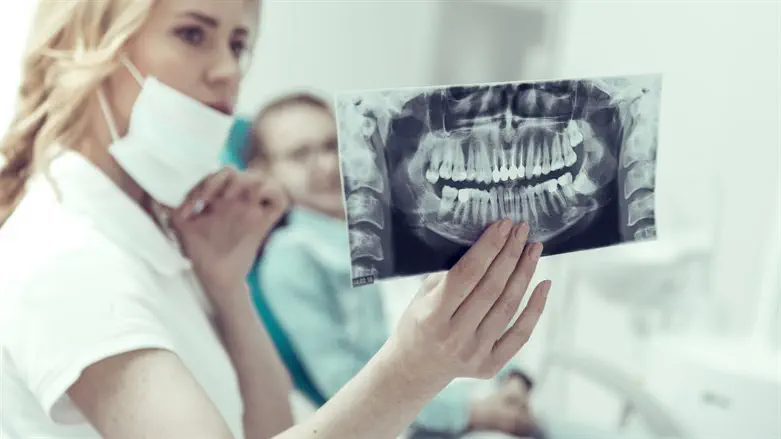
Invisalign: Clear Path to a Perfect Smile
Crooked, twisted, overlapped, or gapped teeth might turn any life of the party into a timid shadow. Luckily, there’s a way to give up your smiling limitations without highlighting your “in treatment” status. Invisalign technology has already gained thousands of aficionados across the globe and for a good reason. We’ll tell you about its working principle and explore its numerous advantages so that you can decide whether this technique is right for you.
What Is Invisalign?
Invisalign is an invisible orthodontics technology invented by Zia Chishti, a student at Stanford University, in 1997. Having worn braces, Chishti strived to develop a retainer-like device to save patients from the struggles of wearing these dental appliances. Invisalign proved its efficiency in moving teeth into place, and a year later, the prototype product was approved by the US Food & Drug Administration.
The working principle of Invisalign is that you get special custom-made removable aligners for your teeth, which you should change once every few weeks for a charming, aesthetic smile. Though you have to wear them 22 hours a day, these virtually invisible dental tools don’t cause much inconvenience. When you eat, drink, exercise, and brush your teeth, you can simply take them off.
The ‘Align Technology’ founded by Chishti and his colleagues still operates the Invisalign brand. Numerous dental clinics in the USA allow you to straighten teeth and correct your bite, and you can find Invisalign in Queens, Manhattan, Bronx, and other boroughs of New York City.
7 Benefits of Invisalign
Why do multiple patients choose this discreet treatment option over traditional braces? Invisalign technology provides several hefty advantages:
- Enhanced comfort. While metal braces have sharp edges that can dig into your lips and cheeks, invisible aligners have smooth edges from high-quality resin that’s particularly gentle to your oral cavity.
- Better oral hygiene. You can take them out during meals or drinking other beverages than cold water. Aligners empower you to continue your normal dental routine, which is a bit challenging with braces.
- Extra precision. Invisalign is a custom-fit technology, so aligners are more accurate for straightening your teeth. Every tooth movement is meticulously monitored and timed by dental professionals, ensuring each tooth is set in its proper place.
- Cure various dental problems. Crowded, gapped, or widely spaced teeth, an abnormal bite, or mild misalignment — removable aligners can handle all these dental issues in a relatively short time (up to 18 months). Given that such dental problems come hand in hand with gum infections, chewing issues, and jaw aches, correcting your bite is a kind of predictive modeling for an improved smile.
- 3D scanning technology. To get a full scan of your teeth and create individualized aligners, a doctor will apply an updated non-invasive method. This way, you can avoid dental X-rays and impressions.
- Perfect for adults. If you are far from your teens, these invisible aligners can spare you from the hassle of flaunting a “metal helmet” over your teeth in front of your business partners and colleagues. Made from a medical-grade polyurethane resin, these dental appliances are practically invisible.
- Fewer dental visits. With invisible aligners, you don’t have to visit your dentist as frequently as with braces. You will have to arrange an appointment once in 4–6 weeks, and these visits will be shorter and less intrusive.
How Does Invisalign Work?
Invisalign offers a set of custom-fit, invisible aligners from clear, medical-grade thermoplastic that will gradually adjust your teeth to the optimal position. A controlled force is applied to different parts of your teeth during various stages of your treatment, so each tooth ends in its proper place. Each new set of aligners affects specific teeth, making the process less painful in comparison to metal braces.
You should take care of constantly wearing your aligners, except when eating or brushing your teeth. You also need to wear them while sleeping, but these appliances are very smooth to the touch, so you won’t feel any discomfort. It’s fairly easy to clean Invisalign aligners: just rinse them in lukewarm water and brush them daily with your toothbrush. The longevity of Invisalign treatment depends on your particular dental condition.
Is Invisalign Right for You?
The good thing is that Invisalign benefits most common dental conditions, from overcrowded to gapped teeth. There are no age restrictions to wearing Invisalign. They can even work for patients with dental crowns! However, certain limitations exist, and we don’t recommend Invisalign for patients with:
- active gum disease;
- extremely overcrowded teeth;
- missing teeth;
- uncured cavities;
- severe bite issues;
- poor oral hygiene habits, etc.
In some cases, a dentist can prescribe preliminary treatment to get to Invisalign further. It’s always best to ask a professional about your current dental problem and whether Invisalign is the most beneficial solution for you.
Invisalign: Сustom-Made Plan for Smile Makeover
The famous expression "No pain, no gain" in no way relates to Invisalign. These miraculous aligners are aimed to keep your teeth straight and stable without major discomfort. The process of shifting your teeth to the appropriate position doesn’t cause the torments of Tantalus, leaving you with the perfect smile that can move mountains.